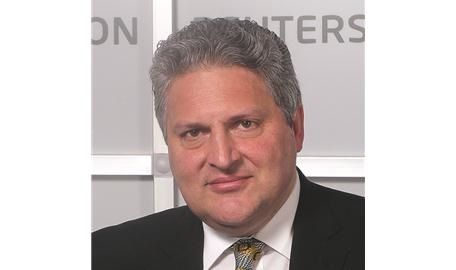WITHOUT ROBUST CAPITAL markets, economies cannot innovate rapidly or grow sufficiently to create new businesses and jobs. Can’t disagree with that, right?
Overlaying that comment with the fact that banks are being regulated into submission, and having written just the other week that the resolution framework had become too convoluted, confusing and complex, I found myself agreeing in principle with the thrust of the plan recently unveiled by Jeb Hensarling (R-Texas) whose comment that was.
Hensarling wants to do away with vast swathes of current US financial regulation to promote economic expansion under a US Republican administration. (I want to make it clear that in writing this commentary I neither make nor intend any statement of support for any political party.)
The chairman of the House Financial Services Committee is pushing his Financial CHOICE Act (as in Creating Hope and Opportunity for Investors, Consumers and Entrepreneurs) hard. A self-styled new paradigm in banking, capital markets and financial opportunity, this will see Dodd-Frank kicked ferociously into touch in favour of a more libertarian set of rules around TBTF, bank capital, regulatory scrutiny but tougher oversight of regulatory agencies.
Hensarling famously dislikes much of the existing US regulatory architecture. But he hates Dodd-Frank. In a recent speech to the Economic Club of New York he said it rests upon “faulty principle, faulty premise and faulty policy”.
Dodd-Frank is the “absolute epitome of Washington greed”, he said, and has failed to promote financial stability. “Dodd-Frank’s Volcker Rule and provisions of Basel have led to dramatic bond market illiquidity and volatility. Many believe this could well be the source of the next financial panic. When it comes to systemic risk, regulatory micro-management is no substitute for market discipline”.
Is the concept he envisages for dealing with US bank regulation workable? Well on the basis that no-one knows for sure if the current bail-in/resolution play-book is workable for a systemically important bank, and on the basis that banks are being forced by regulation into low-return utility models that are seen as under-serving the economy, I guess the answer to that has at worst to be “maybe”.
Is a trade-off between high capital levels and low regulatory burden for banks wise? Good question. Hensarling will give banks the latitude to opt into an alternative regime that stops investors from betting with taxpayer money. He has teed up what he calls a “market-based, equity financed Dodd-Frank off-ramp”.
This will see Dodd-Frank kicked ferociously into touch in favour of a more libertarian set of rules
THE PLAN IS simple: banks sporting a leverage ratio (based on the current SLR calculation) of at least 10% and a composite CAMELS supervisory rating of 1 or 2 can exempt themselves from any post-Dodd-Frank supervisory regime, from Basel III and from other regulatory burdens.
I do wonder what a large bank with a sky-high 10% leverage ratio looks like, what its business profile resembles or even if it’s economically viable. Won’t nose-bleed capital levels create natural disincentives to lend or trade? What about the notion of an international level playing field? By Hensarling’s own calculation, US G-SIBs will need to raise several hundred billion dollars of new equity to qualify.
But you’ve got to like the plan’s simplicity: no complex RWA-based measures, no living wills, no ADI/MDC restrictions. Qualifying banks can make capital distributions freely. The basis of the construct is that if banks have super-high levels of capital, there is no reason for regulators to worry about the quality of their loan or securities portfolios as losses could be absorbed by shareholders.
Hence no need for the “misguided and unneeded Volcker Rule” that bans proprietary trading. “It is apparent”, Hensarling said, “not only that the Volcker Rule was unnecessary but also that it has made capital markets less liquid and more fragile, and undermined financial stability”.
TBTF will be consigned to history since the Financial CHOICE Act endorses the Financial Institution Bankruptcy Act (which has passed the House and moved to the Senate in April 2016). It doesn’t stop there: Hensarling’s sweeping Act will repeal FSOC’s authority to designate SIFIs and will repeal previous designations; impose a cost-benefit test for financial regulation; bring all financial regulatory agencies on budget and under Congressional control (with the exception of the Fed’s monetary policy functions).
Regulatory agencies headed by single directors – CFPB, OCC, FHFA – will be converted into bipartisan commissions; they will also be brought into the Regulations from the Executive In Need of Scrutiny Act 2015 (the REINS Act), which requires a Congressional vote to approve executive regulation with an annual spend of US$100m-plus. The Chevron Deference (which holds that the courts should defer to regulatory agency interpretations of the law unless they are unreasonable) will be dismantled; penalties for financial fraud will be increased; while community banks will receive regulatory relief as the “one-size-fits-all” approach gives way to more tailored rules.
Being able to opt out of Dodd-Frank’s “suffocating regulatory complexity and control” in favour of market discipline will certainly get bankers thinking. Talk to any bank these days and it’s not long before you get onto the subject of regulation. Not just its dramatic impact of business models and strategies; not just its dramatic complexity but its dramatic costs, not least the cost of employing tens of thousands of compliance staff.
In a six of one, half a dozen of the other swings and roundabouts world, weighing up the pros and cons of maintaining a heavier capital stack against the flip side of light-touch regulation free from the massive costs of implementation and compliance is certainly an intriguing thought.
